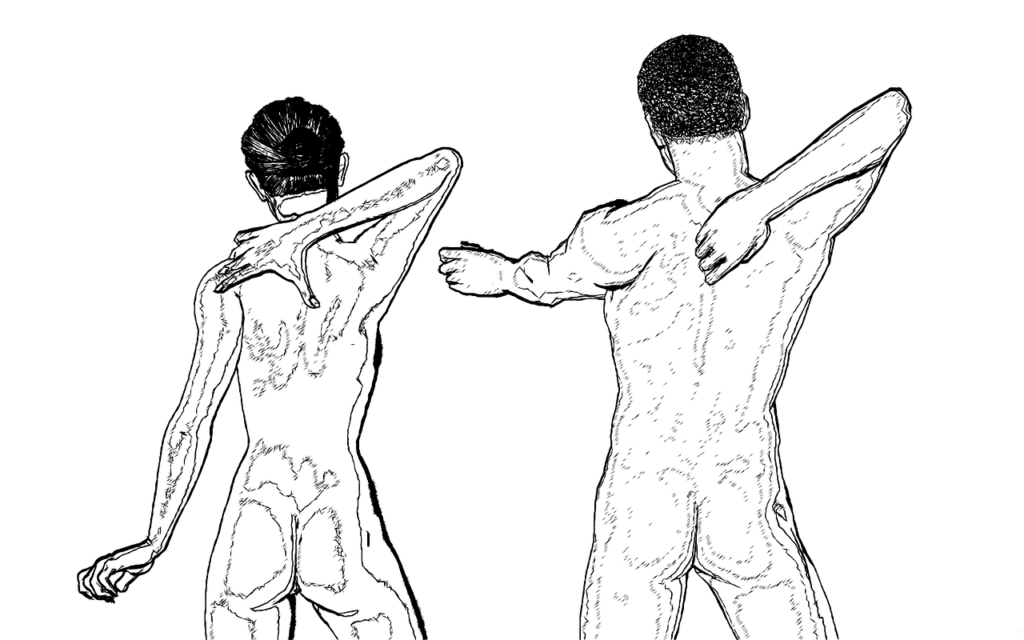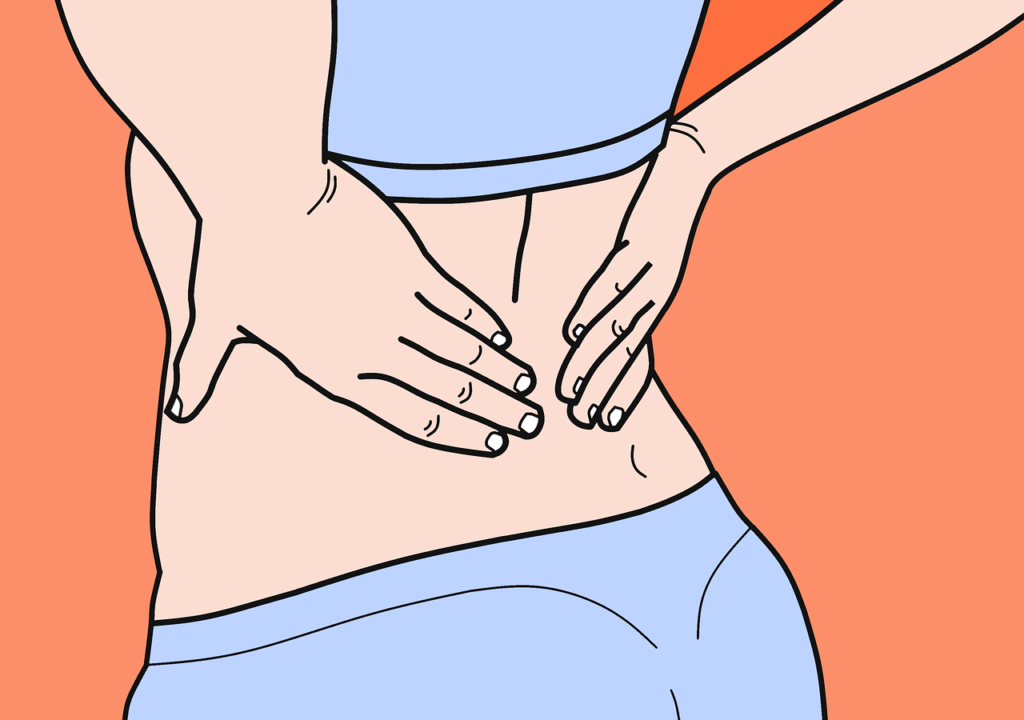If you’ve ever struggled with back pain, you know just how debilitating it can be. The constant discomfort, limited mobility, and frustration can take a toll on your overall well-being. But fear not, because there may be a solution that’s been hiding in the ancient practice of yoga. Many people believe that certain yoga poses can provide relief and support for those suffering from back pain. In this article, we’ll explore whether there are indeed specific yoga poses that can help alleviate this common ailment and potentially restore balance and comfort to your life.
The Importance of Yoga for Back Pain Relief
Yoga has long been praised for its numerous benefits, one of which includes providing relief for back pain. If you suffer from this common discomfort, incorporating yoga into your daily routine can significantly improve your overall well-being. By practicing specific poses and focusing on proper alignment and mindfulness, you can alleviate back pain and strengthen the muscles supporting your spine. In this article, we will explore how yoga can help with back pain, the benefits of using yoga for relief, understanding the causes of back pain, key considerations for practicing yoga with back pain, recommended yoga poses for back pain relief, tips for safely practicing yoga, incorporating yoga into your daily routine, seeking professional guidance and resources, and ultimately, the holistic approach that yoga offers for managing back pain.
How Yoga Can Help with Back Pain
Yoga provides a holistic approach to back pain relief by improving flexibility, building strength, and promoting relaxation and stress reduction. By practicing yoga regularly, you can enhance the health of your spine and alleviate discomfort. The gentle movements and stretches in yoga poses help to increase blood flow and release tension in the muscles surrounding your spine, promoting healing and reducing inflammation. Additionally, yoga enhances core strength, which provides stability and support to your back, reducing the risk of future pain or injury. As yoga promotes mindfulness and relaxation, it can also help alleviate stress, which often contributes to back pain.

Benefits of Using Yoga for Back Pain Relief
Using yoga as a natural remedy for back pain offers numerous benefits. One of the major advantages is the potential for long-term relief. Unlike medications or temporary treatments that only mask the symptoms, yoga addresses the root causes of back pain. By gradually improving flexibility and strength in your spine and surrounding muscles, yoga can help correct the imbalances that may be causing your discomfort. Additionally, yoga promotes overall well-being by reducing stress, improving posture, and increasing body awareness. Regular yoga practice can also enhance your sleep quality, boost your mood, and improve your overall quality of life.
Understanding the Causes of Back Pain
Back pain can stem from various causes, including muscle strains, poor posture, herniated discs, and spinal conditions. Understanding the root causes of your back pain is essential in effectively addressing and managing it. While yoga is not a cure-all for all types of back pain, it can help alleviate discomfort and prevent future issues. By addressing the underlying causes of back pain, such as muscle imbalances and stiffness, yoga can provide a comprehensive approach to healing.

Common Causes of Back Pain
Several common causes of back pain include sedentary lifestyles, poor posture, muscle imbalances, and spinal conditions. Leading a sedentary lifestyle with prolonged periods of sitting can weaken the muscles supporting your spine, leading to pain and discomfort. Poor posture, whether from slouching or hunching over, puts undue stress on your back and can lead to imbalances in the muscles. Muscle imbalances, often caused by overuse or underuse of certain muscle groups, can result in pain and stiffness. Lastly, conditions such as herniated discs or spinal stenosis can cause intense back pain and require specific care and modifications in yoga practice.
How Yoga Addresses the Root Causes of Back Pain
Yoga helps address the root causes of back pain by focusing on stretching, strengthening, and rebalancing the muscles supporting your spine. Through gentle and controlled movements, yoga poses increase flexibility and release tension in the muscles, promoting healing and reducing inflammation. By improving core strength, yoga enhances stability and reduces stress on the spine. Additionally, yoga promotes proper alignment and body awareness, helping to correct postural issues that contribute to back pain. Regular yoga practice can rebalance muscle strength, improve spinal alignment, and alleviate existing back pain while reducing the risk of future injuries.

Key Considerations for Practicing Yoga with Back Pain
Before implementing a yoga practice for back pain relief, it’s important to consult with a healthcare professional, particularly if you have any underlying conditions or injuries. A qualified healthcare provider, such as a physical therapist or orthopedic specialist, can provide guidance on whether yoga is suitable for your specific condition and offer recommendations for modifications or additional treatments. It is crucial to listen to your body and practice self-care by modifying poses as needed to avoid exacerbating your pain. Taking these key considerations into account will ensure a safe and effective yoga practice for back pain relief.
Consulting with a Healthcare Professional
When dealing with back pain, it’s essential to consult with a healthcare professional before embarking on any new exercise regimen, including yoga. Your healthcare provider can assess your condition, diagnose any underlying issues, and provide guidance on incorporating yoga into your treatment plan. They may offer specific modifications or precautions based on your individual needs, ensuring that your yoga practice is safe and beneficial.
Modifying Poses for Your Specific Condition
Every individual’s back pain is unique, and certain poses in yoga may need to be modified or avoided altogether depending on your specific condition. Some poses may exacerbate your pain or put unnecessary strain on your back. It is crucial to communicate with your yoga instructor or healthcare professional and seek guidance on the appropriate modifications. They may suggest the use of props, such as blocks or straps, to provide support and alleviate pressure on your back. Modifying poses will allow you to maintain a safe and effective practice tailored to your condition, promoting healing and pain relief.
Recommended Yoga Poses for Back Pain Relief
When practicing yoga to alleviate back pain, several poses have shown promising results in reducing discomfort and promoting healing. While it’s essential to consult with a healthcare professional or experienced yoga instructor to ensure proper form and technique, the following poses are commonly recommended for back pain relief:
Child’s Pose (Balasana)
Child’s Pose is a gentle resting pose that stretches the lower back muscles, relieves tension, and promotes relaxation. By folding the body forward and resting the forehead on the mat, you can release tension and alleviate pressure on the spine.
Cat-Cow Pose (Marjariasana-Bitilasana)
Cat-Cow Pose is a simple yet effective way to warm up the spine and promote flexibility. By alternating between arching the back like a cat and extending it like a cow, you can stretch and mobilize the spine, reducing stiffness and promoting circulation.
Downward-Facing Dog (Adho Mukha Svanasana)
Downward-Facing Dog is a foundational pose that stretches and strengthens the entire body, including the back. By forming an inverted “V” shape with the body and pressing the hands and feet into the mat, you can lengthen the spine and relieve tension in the back muscles.
Thread the Needle Pose (Parsva Balasana)
Thread the Needle Pose is a gentle twist that targets the muscles around the spine, promoting release and relaxation. By threading one arm under the opposite arm and resting the shoulder on the mat, you can gently twist and stretch the back, relieving tension and discomfort.
Bridge Pose (Setu Bandha Sarvangasana)
Bridge Pose strengthens the back, glutes, and hamstrings while opening the chest and shoulders. By lifting the hips off the mat while keeping the feet and shoulders grounded, you can activate the muscles supporting the spine, improving stability and reducing back pain.
Extended Triangle Pose (Utthita Trikonasana)
Extended Triangle Pose is a standing pose that stretches and strengthens the legs, hips, and back. By extending one leg to the side and reaching the arm overhead, you can lengthen the spine and stretch the back muscles while improving core stability.
Seated Forward Bend (Paschimottanasana)
Seated Forward Bend is a seated pose that stretches the entire back of the body, including the spine and hamstrings. By folding forward from the hips and reaching for the feet or ankles, you can release tension in the back muscles and promote relaxation.
Supine Spinal Twist (Supta Matsyendrasana)
Supine Spinal Twist is a reclined twist that gently stretches the back and promotes spinal mobility. By lying on the back and twisting the legs to one side while keeping the shoulders grounded, you can release tension in the back muscles and alleviate discomfort.
Fish Pose (Matsyasana)
Fish Pose opens the chest, stretches the front of the body, and relieves tension in the back muscles. By lying on the back and arching the upper back while supporting the head with the hands or forearms, you can strengthen the upper back and promote flexibility.
Supported Corpse Pose (Savasana)
Supported Corpse Pose is a deeply relaxing pose that allows the body to rest and rejuvenate. By lying on the back with support under the knees and a bolster or blanket for added comfort, you can release tension throughout the body, including the back, and promote relaxation.
Tips for Safely Practicing Yoga with Back Pain
While yoga can be an effective tool for managing back pain, it’s crucial to practice safely to avoid further injury or discomfort. By following these tips, you can ensure a safe and beneficial yoga practice for back pain relief:
Start with Gentle Poses
Begin your yoga practice with gentle poses and gradually progress to more advanced ones as your strength and flexibility improve. Starting with gentle poses allows your body to warm up, prepare for movement, and avoid unnecessary strain on your back.
Use Props for Support
The use of props, such as blocks, straps, or bolsters, can provide support and make poses more accessible. Props help you maintain proper alignment and prevent overstretching or straining the back muscles. Consult with a yoga instructor to determine which props would benefit your practice.
Listen to Your Body
Pay attention to your body’s signals and adjust or modify poses as needed. If a pose causes pain or discomfort in your back, back off and find a variation or alternative that feels more comfortable. Trusting and respecting your body’s limitations is essential for a safe and effective yoga practice.
Avoid Poses that Exacerbate Your Pain
Everybody is unique, and certain poses may aggravate your specific back condition or injuries. Avoid poses that cause or increase your pain, and focus on poses that provide relief and promote healing. Consulting with a healthcare professional or experienced yoga instructor can help you identify which poses to avoid.
Incorporating Yoga into Your Daily Routine
To reap the full benefits of yoga for back pain relief, it’s essential to incorporate it into your daily routine. Consistency is key in improving flexibility, strength, and overall well-being. By setting aside regular practice time, even if it’s just a few minutes each day, you can gradually build a strong foundation and make noticeable progress in managing your back pain.
Setting Aside Regular Practice Time
Schedule designated time each day for your yoga practice. Whether it’s early in the morning before your day begins or in the evening to unwind, committing to a regular practice will help you establish a routine and prioritize your well-being. Start with shorter durations and gradually increase the length of your practice as your body adjusts and becomes more comfortable.
Combining Yoga with Other Complementary Therapies
While yoga can be effective on its own, combining it with other complementary therapies can enhance your overall well-being and back pain management. Consider incorporating other practices such as meditation, massage, or acupuncture into your routine. These therapies can help reduce stress, relax the body, and promote healing alongside your yoga practice.
Seeking Professional Guidance and Resources
If you’re new to yoga or experiencing severe back pain, seeking professional guidance can help ensure a safe practice tailored to your needs. Finding a qualified yoga instructor who has experience working with individuals with back pain is crucial. They can provide proper guidance on alignment, modifications, and sequencing that supports your healing process. Additionally, there are various online resources and videos available that offer yoga practices specifically for back pain relief.
Finding a Qualified Yoga Instructor
When searching for a yoga instructor to guide you through your practice, look for someone with a background in therapeutic or restorative yoga or experience working with individuals with back pain. They will have the knowledge and expertise to safely guide you through the practice, provide modifications, and offer personalized support.
Online Resources and Videos for Practicing Yoga at Home
For those unable to attend in-person yoga classes or seeking additional resources to support their practice, online platforms offer a wealth of yoga videos specifically designed for back pain relief. Websites and mobile applications dedicated to yoga provide a convenient and accessible way to practice at home. Ensure that the videos you follow are led by reputable instructors with experience in therapeutic yoga or back pain relief sequences.
Conclusion
Yoga provides a holistic approach to back pain management by addressing the root causes of discomfort, improving flexibility, strengthening the supporting muscles, and promoting relaxation and stress reduction. By incorporating specific yoga poses into your daily routine, modifying them to suit your condition, and practicing with mindfulness and awareness, you can experience relief from back pain and improve your overall well-being. Remember to consult with a healthcare professional or qualified yoga instructor, listen to your body, and practice safely to reap the full benefits that yoga offers for back pain relief. With dedication and consistency, you can embark on a journey to a pain-free back and a healthier, more balanced life.
